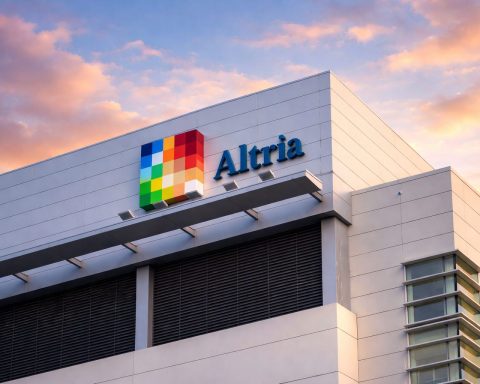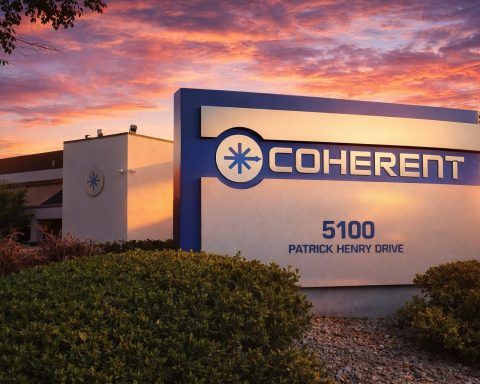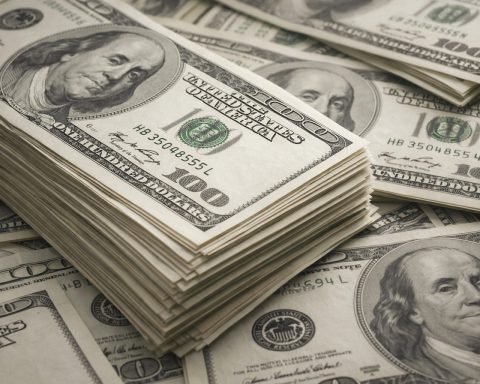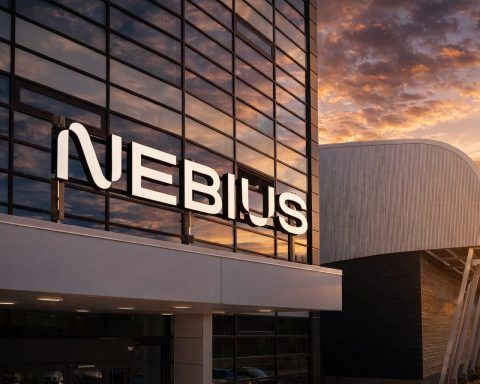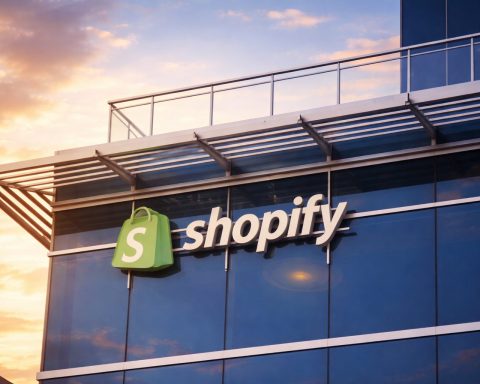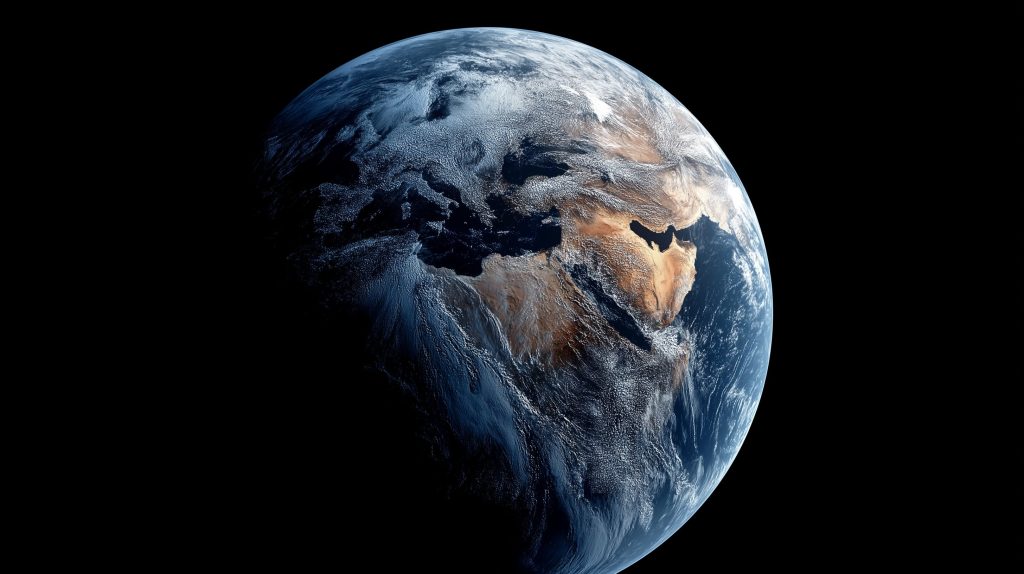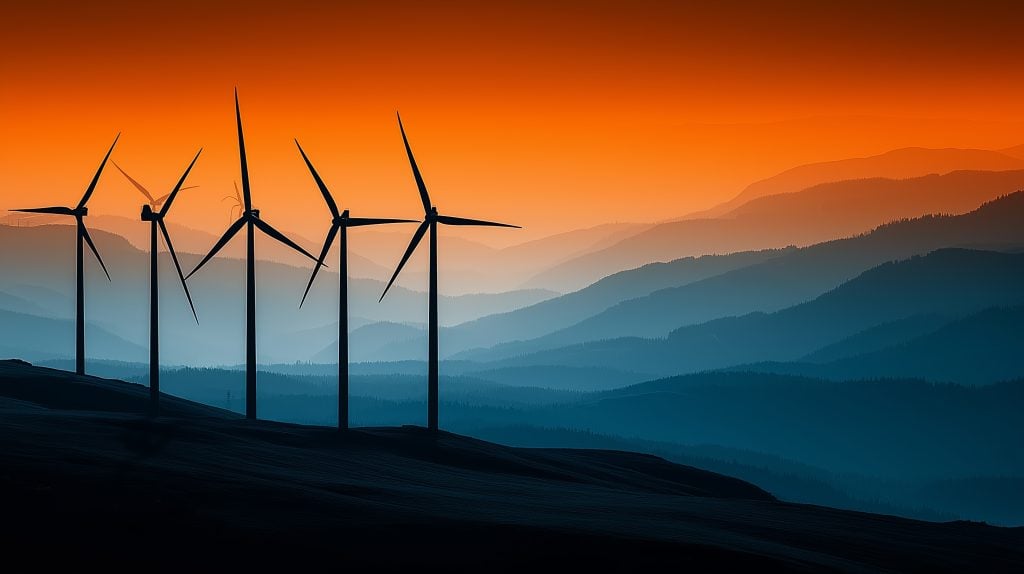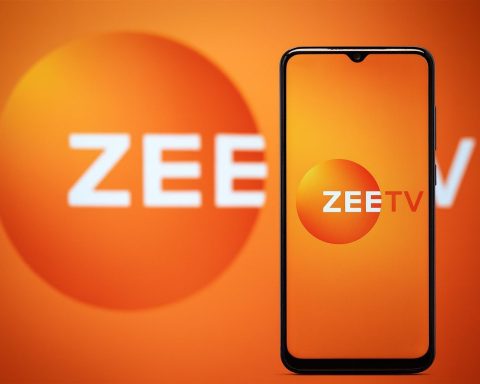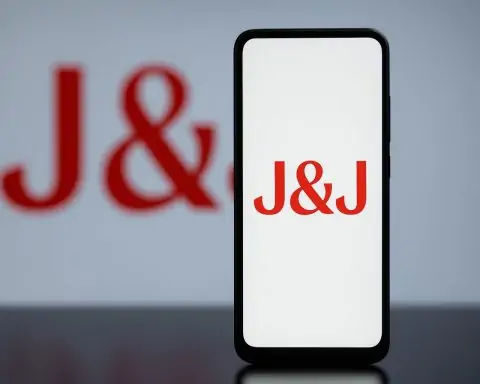- In June 2025, YouTube rolled out a wave of features around VidCon, including new audience segments “New,” “Casual,” and “Regular” viewers.
- The YouTube Community Tab became available to all channels and now lets fans post from mobile.
- YouTube Shorts gained shopping stickers globally with tests showing 40% higher product click-through in the U.S.
- YouTube reports viewers spend 80 million hours per day watching shopping-related videos.
- YouTube expanded auto-sync video editing for Shorts to automatically match music beats.
- YouTube introduced a Fan Leaderboard for live chats globally and added animated donation GIFs (US-only).
- YouTube launched Player for Education, an ad-free embeds program for schools that pays creators for educational videos used in classrooms.
- At TikTok World in June 2025, TikTok announced Market Scope analytics that track users’ funnel stages—Awareness, Consideration, and Conversion.
- TikTok also launched a Brand Consideration ad objective to directly reach users likely to convert.
- TikTok introduced the Insight Spotlight dashboard, which highlights trending hashtags and keywords with demographic breakdowns to help brands find relevant creators.
Major Platform Updates and New Features
YouTube rolled out a wave of new features in June 2025, many unveiled around VidCon. Creators gained advanced audience insights, with new viewer segments (“New,” “Casual,” and “Regular” viewers) to better target content [1]. Community engagement tools expanded: the Community Tab became available to all channels and now even lets fans post (mobile-only), boosting interaction [2]. Shopping integration hit Shorts – YouTube’s new shopping stickers inside Shorts (globally launched) drove 40% higher product click-through in U.S. tests [3], signaling big potential as viewers now spend 80 million hours/day watching shopping-related videos [4]. YouTube also globally expanded auto-sync video editing (automatically matching clips to music beats) for easier Shorts creation [5]. Live streaming got upgrades too: a Fan Leaderboard for live chats rolled out globally to gamify engagement [6], and new animated donation GIFs were added (US-only) to liven up streams [7]. On the monetization front, YouTube introduced Player for Education, a special ad-free embeds program for schools that pays creators for educational videos used in classrooms [8]. These changes underscore YouTube’s push for multi-format content (shorts, long-form, live) and new revenue streams.
TikTok: TikTok’s fifth annual TikTok World event (June 2025) showcased new tools for brands and creators. The platform introduced advanced ad analytics called Market Scope, which tracks users’ funnel stages (Awareness, Consideration, Conversion) to help target high-intent audiences [9] [10]. Building on these insights, TikTok launched a new “Brand Consideration” ad objective to directly reach users likely to convert [11]. For creator collaborations, TikTok expanded its TikTok One platform with an Insight Spotlight dashboard highlighting trending hashtags/keywords (with demographic breakdowns) so brands can find relevant creators more easily [12] [13]. A Content Suite was also added, letting marketers pull up all user videos mentioning their brand and seamlessly turn them into ads [14]. TikTok further pushed into AI: it integrated an AI-powered Search Ads Center to suggest keywords and optimize buying search ads in-app (noting TikTok’s search activity jumped 40% YoY) [15]. In commerce ads, TikTok upgraded its “Symphony” AI video generation platform to work with Smart+ automated campaigns [16], aiming to simplify creative production for ads. These updates indicate TikTok’s focus on smarter ad targeting, brand partnerships, and AI automation on the platform [17].
Instagram: Instagram’s June 2025 update was packed with creator-focused features. Grid customization arrived – users can now rearrange their profile photo grid via a new “Edit Grid” option, giving creators control over the aesthetic first impression [18] [19]. This long-requested feature (rolling out globally) lets accounts curate which posts appear and in what order, effectively enabling a “portfolio” look on their profile [20]. Instagram also added real-time music status: by linking Spotify, creators can display the song they’re currently playing as a status note (visible to mutuals), adding a personal touch to profiles [21] [22]. Another big change – the classic Story Highlights rings on profiles are being phased out. Instead, a dedicated Highlights tab (tested in June) will house archived Stories, altering profile layouts and prompting creators to pin key Stories as Reels or posts instead [23] [24]. For video creators, Instagram introduced the ability to share Reels to Facebook for monetization: creators can bulk repost their old Reels to Facebook and earn ad-share revenue from new views [25] [26]. This effectively “revives” evergreen content for a new audience. Other notable updates include support for 3:4 aspect ratio photos in feed (beyond 1:1 and 4:5) to give posts more screen real estate [27], Multiple profile photos (up to 4 per account) that creators can toggle, and a Shared Account Access feature allowing managers to post on a creator’s behalf securely [28] [29]. Instagram also officially launched Edits, a free standalone video editing app for creators, integrating teleprompter and overlay tools to streamline content production (Meta’s answer to third-party apps) [30] [31]. These changes, along with Instagram’s new partnerships (e.g. an Artist Inspiration campaign featuring musicians and a “Drafts” creator incubator funding emerging talent [32] [33]), illustrate Instagram’s strategy to keep creators engaged with better tools, creative freedom, and opportunities for monetization across Meta’s ecosystem.
Twitch: Amazon’s Twitch introduced significant creator experience upgrades in mid-2025. At TwitchCon (Rotterdam, late May), it announced dual-format streaming: creators will soon be able to stream in horizontal and vertical video simultaneously, optimizing for mobile viewers [34] [35]. Twitch is testing this with select streamers, using tech (via Aitum/OBS) to let streamers provide a reframed vertical feed for phone viewers [36] [37]. Another long-awaited feature – 2K (1440p) streaming – entered expanded beta for Partners/Affiliates, with Twitch raising bitrate limits and using efficient codecs (HEVC) to deliver higher quality video [38] [39]. In terms of interactivity, Twitch began rolling out “Combos”, a new Bits-driven feature where viewers collectively trigger on-screen effects during hype moments (e.g. cascades of animated emotes) [40] [41]. Combos were in closed beta in June but set to expand, giving creators fresh ways to monetize big moments through community purchases [42]. Twitch also responded to feedback by enabling streamer-led subscription promos: starting summer 2025, Partners/Affiliates can run their own discounted sub events (for a limited number of hours per year), instead of waiting for Twitch-wide promos [43] [44]. Another quality-of-life change: Twitch imposed a 100-hour storage cap for stream highlights and uploads (requiring creators to backup older VODs externally), a move that drew attention as it forces creators to treat Twitch more as a live platform and use platforms like YouTube for archival [45] [46]. Finally, to support moderation, Twitch launched Mobile Mod View on Android, giving community moderators better tools on the go [47], and it created a Twitch Moderators Club (a private Discord community for mods to share best practices) [48]. All told, Twitch in this period doubled down on video quality, mobile engagement, and new monetization/interactive features, while continuing its 2025 goal of making streaming more accessible and profitable for smaller creators [49] [50].
X (Twitter): Under Elon Musk’s leadership (now rebranded as “X”), the platform saw policy upheavals and feature experiments. In late June, Musk banned hashtags in ads entirely, declaring that promoted posts can no longer contain clickable hashtags [51] [52]. This unusual policy change – aimed at improving ad “aesthetics” – has major implications for social marketers used to campaign hashtags. X is also tweaking its ad billing: it plans to charge advertisers by ad size (larger visuals costing more) rather than just engagement, reflecting a push to boost ad revenue [53] [54]. On the creator side, X expanded its analytics: a new “Follower vs Non-Follower engagement” metric was introduced to X Premium users, revealing that typically only ~2–3% of tweet engagements come from one’s followers – 97% are from non-followers amplified by the algorithm [55] [56]. This insight underscores the platform’s discovery-centric reach but also the challenge in building loyal communities on X. To cater to video creators, X launched a dedicated Video tab (tested in the US), noting that video views were up 40% year-on-year; the tab provides a swipeable full-screen feed of videos, aiming to compete with TikTok/Reels and open new ad inventory [57] [58]. Other noteworthy changes: X rolled out mandatory labels for parody accounts (a jester hat icon) to curb impersonation after the paid verification fallout [59] [60]. And in content, X continued signing media deals – e.g. an NFL Originals programming partnership – to bolster sports discussion and video content on the app [61]. Notably, X hired a new Head of Product, Nikita Bier (known for viral apps) in June to reignite user growth [62]. Meanwhile, the competitive landscape intensified: Meta’s Threads (a Twitter-like service launched by Instagram) saw strong early downloads, and by June X was touting its own usage uptick after Musk’s high-profile clash with former U.S. President Trump [63]. Overall, X is experimenting boldly – from AI (allowing community moderators to use AI bots for fact-checking notes [64]) to pushing more video – but also faces headwinds with advertisers and users adjusting to Musk-era policies.
Others (Patreon, Substack, etc.): Creator membership platform Patreon announced a major pricing change in June. Starting August 2025, Patreon will raise its commission fee for new creators to 10% of earnings (up from the current 8% on the standard Pro plan) [65]. This move consolidates Patreon’s Pro and Premium tiers: new sign-ups post-deadline go onto a 10% “Standard” plan (with Premium features included), while existing creators are grandfathered at 8% (Pro) or lowered from 12% to 11% (Premium) [66] [67]. Patreon justified the hike by citing its expanded services since 2019 – including native video hosting and community features – and it pledged to keep investing in the platform creators “build their businesses on” [68] [69]. In fact, Patreon’s video platform (launched in beta 2022) is getting more generous: instead of a lifetime cap of 100 hours, creators will soon get 100 hours of video uploads per month for free [70]. This reflects Patreon’s intent to compete with YouTube and others as a one-stop creator hub [71].
Newsletter platform Substack is similarly evolving beyond its roots. By July 2025, Substack had rolled out livestreaming video features to all users and was rapidly adding tools to help writers turn into multimedia creators. A key new feature announced on July 2 was AI-powered video clipping: Substack now uses AI to auto-generate short highlight clips from a creator’s livestream recordings [72]. Creators can post these clips to Substack’s own discovery feed (Notes) and even automatically push top clips to YouTube Shorts if their accounts are linked [73] [74]. Additionally, when a Substack creator schedules a livestream, the platform will now auto-generate promotional posts for them on Notes, YouTube, and elsewhere – saving time on marketing [75]. Substack also added audio-only livestream modes and a TikTok-like scrollable video feed in recent months [76], signaling its intent to become a full-fledged creator platform (not just newsletters). This comes on the heels of Substack’s bold moves earlier in 2025, such as launching a $20M Substack Creator Fund to entice paid creators (e.g. those on Patreon) to migrate by guaranteeing their income during the transition [77] [78]. These developments show Substack betting that independent creators want video, live interaction, and monetization tools under their own brand – part of a larger trend of creators seeking greater ownership over their audience.
Monetization Changes and Creator Earnings Trends
Platform Revenue Programs: Across social platforms, monetization models continued to shift in mid-2025. Twitter/X expanded access to its creator monetization – any user with 500+ followers, an $8/month X Premium (verified) subscription, and 5 million recent impressions can now enroll for ad revenue sharing and paid subscriptions [79] [80]. X’s Ads Revenue Sharing (launched in early 2025) lets eligible creators earn a cut of ad income from replies to their tweets by verified users. Payouts have varied widely – some mid-tier creators (~7k followers) reported earning a few hundred dollars a month [81] [82], though Musk noted that top-engagement accounts could earn significantly more. For subscriptions, X has been letting creators keep an unusually high 97% of subscription revenues (until a $50k lifetime earning, then 90%) [83] to attract talent, far above the typical 70–90% on other platforms. These incentives reflect X’s drive to compete with YouTube and Patreon for creator loyalty. YouTube, for its part, highlighted that its Channel Memberships (paid fan subscriptions) grew 45% year-over-year [84], underlining strong uptake of direct monetization on the platform. YouTube also ramped up Shorts monetization: after introducing ad revenue sharing for Shorts in early 2023, by mid-2025 Shorts have 2+ billion logged-in viewers and YouTube announced AI tools (like Veo 3 for auto-generating Shorts) to help creators produce more short-form content that can drive earnings [85] [86].
Patreon & Subscription Platforms: The membership and subscription side of the creator economy saw a mix of price changes and growing competition. Patreon’s aforementioned fee increase for new creators (to 10%) [87] effectively asks creators to trade a higher revenue cut for Patreon’s expanded features (like native video, merch fulfillment, etc.). This sparked discussions on creator forums about the value Patreon provides versus alternative platforms. Substack’s strategy, conversely, has been to dangle money in front of established creators through its $20M fund and emphasize ownership (writers on Substack keep 90% of subscription revenue and own their mailing lists). The competition for creators is driving innovation: e.g. OnlyFans (known for adult content but also used by mainstream creators) reportedly explored new content categories and continued to pay out billions to creators annually, while newcomers like Kajabi, Ko-fi, and others offered lower fees or unique services (live workshops, tipping, etc.).
Diversification and Creator Products: A notable trend in 2025 is creators diversifying income beyond platforms. According to industry surveys, 88% of creators have launched their own product or service, and two-thirds of consumers have purchased a creator-branded product or service [88]. Many top influencers are leveraging their fame to sell merch, start companies (from coffee brands to makeup lines), or host paid events. At the same time, brands are increasingly interested in co-created products – fully 93% of marketers plan to launch a product/service in partnership with a creator in the near future [89] [90]. This shift to long-term brand deals and product collaborations means creators can earn not just via platform payouts but through equity, royalties, or profit-sharing in ventures. For example, YouTuber MrBeast’s snack brand Feastables and YouTuber Emma Chamberlain’s coffee line illustrate how influencer-founded brands can become substantial businesses. The mid-2025 creator economy also saw a renaissance of long-form, premium content – more creators are launching paid podcasts, documentary-style videos, or Substack newsletters, which provide subscription revenue and are less at the mercy of algorithm changes. This move to “owning” one’s audience and cultivating superfans (who provide recurring income) is partly a response to volatility in ad-dependent income. Notably, one analysis found that on X/Twitter, only ~2.3% of viewers of a creator’s posts are followers [91] – highlighting that relying solely on algorithmic reach can be fickle. Creators are hedging by building subscriber communities on platforms like Patreon, YouTube (Members), Twitch (Subs), and Discord.
Creator Earnings and Funding Climate: In terms of overall earnings, top creators continued to command multi-million dollar incomes, but there is evidence of a funding cooldown for creator economy startups. In Q2 2025, venture funding for creator-focused startups in the U.S. fell about 8% from the previous quarter to ~$679 million [92], indicating investors are becoming choosier after the boom of prior years. Still, the sector is robust: consulting firm Goldman Sachs valued the global creator economy at $250 billion in 2023 and projects it to nearly double to $480B by 2027 [93] [94], reflecting optimism in long-term growth. This forecast is fueled by both the surging number of creators (amateur and professional) and the proliferation of monetization avenues (from brand deals to virtual goods to fan donations). Indeed, mid-2025 saw some creators achieving record earnings; for instance, Twitch streamer Kai Cenat broke subscription records earlier and continued to draw huge paid sub counts, and YouTuber-estates (like children’s content brands) were reportedly selling for high multiples, showing how valuable large audiences remain. AI tools are also helping creators produce more content at lower cost, potentially improving profit margins (see next section). However, creators face rising expenses too – software like Adobe Creative Cloud got pricier: Adobe raised subscription fees by up to ~17% in June for users being migrated to a new “All Apps with AI” plan [95] [96], illustrating how platforms may pass on the cost of AI features. On balance, creators in 2025 are earning more total revenue than ever, but the pie is spread across more channels and must be weighed against new costs (personal brand teams, tools, advertising, etc.). Smart creators are increasingly treating their content as a business startup – diversifying income streams, investing in growth, and leveraging multiple platforms to maximize earnings stability [97] [98].
Innovations in AI Content Creation Tools
AI innovation continued to transform content creation in June–July 2025. Generative AI is now deeply embedded in many platforms, offering creators new superpowers. Notably, Google’s DeepMind unveiled “Veo 3,” a cutting-edge video generation model that YouTube’s CEO Neal Mohan announced will integrate into YouTube Shorts by late summer [99]. Veo 3 can create short video clips from simple text prompts, even incorporating audio, and represents a major leap in quality over prior AI video tools [100] [101]. During VidCon, Mohan showed how Dream Screen, YouTube’s generative background tool (powered by an earlier Veo model), enabled creators to conjure fantastical video backdrops on the fly [102]. By extending this tech to all users, YouTube is effectively letting creators “AI-generate” entire Shorts (e.g. “jungle cats dancing in space” visuals from a prompt) [103] – though Mohan emphasized AI won’t replace original storytelling [104].
Beyond video, AI-driven dubbing and voice cloning became more mainstream. YouTube expanded its Auto-Dubbing tool to 11 new languages and made it available to 80 million creators worldwide [105]. This feature automatically translates and voice-synthesizes a creator’s videos into other languages, allowing creators to reach global audiences without professional translators [106] [107]. In the first six months of use, over 20 million videos were auto-dubbed via YouTube’s AI [108]. Similarly, Google unveiled Gemini Voice, a new text-to-speech model supporting 24 languages and 30 voice styles (seen as a rival to startup ElevenLabs) [109] [110]. These tools mean creators can more easily produce multi-lingual content and even clone their own voice to narrate in different tongues – a boon for educational and how-to channels seeking international growth.
AI video generation outside the big platforms also hit new milestones. Startup Runway released “Gen-4”, an AI model that can generate short video clips from text or image prompts with unprecedented fidelity [111]. Runway Gen-4 (launched end of March 2025) wowed creators with its ability to maintain consistent characters, objects, and scenes across a video, something previous models struggled with [112] [113]. It can take a reference image of a character or style and produce multiple shots of that character in motion, with consistent lighting and perspective – essentially doing primitive “animation” or B-roll generation on demand [114] [115]. This promises to drastically cut production costs for creators who need stock footage or have imaginative concepts that are hard to film. Runway’s advancements, along with Meta’s and Google’s, signal that AI video may soon be a routine part of content creation. Even Microsoft jumped in: its Bing platform (in partnership with OpenAI) introduced a Bing AI Video Creator in mobile, allowing users to generate short 5-second videos from a prompt (using OpenAI’s “Sora” model) [116] [117]. Though rudimentary, it gives everyday creators a taste of AI video generation for memes or intros.
AI image creation and editing also saw improvements relevant to creators. Adobe’s Firefly generative AI, which creates images and text effects, became more integrated into Creative Cloud apps. Adobe unveiled a Firefly mobile app and teased upcoming generative AI features like video and 3D object generation [118]. However, Adobe also controversially decided to auto-upgrade all Creative Cloud subscribers to a higher-priced tier that includes generative AI credits, effectively raising prices on multi-app users by up to ~16% in June [119] [120]. This move underscores how central AI tools have become in creative workflows – from automatic photo extension and cleanup, to AI-generated music and sound effects for videos. Other startups offer specialized AI tools: e.g. ElevenLabs (AI voice cloning) continued to be popular for creators making dubs or AI characters; Midjourney and Stable Diffusion saw new model versions for higher-res graphics; and even video game engines introduced AI to generate landscapes or NPC dialogue on the fly, aiding game streamers and Machinima creators.
Crucially, AI is not just helping produce content, but becoming content. 2025 saw the rise of AI-generated influencers – entirely virtual personas run by algorithms. Experts predict that by late 2025, some AI personas on social media will be “indistinguishable from human creators” in style and engagement [121] [122]. Already, virtual influencers like Lil Miquela have millions of followers, and companies are now generating custom AI brand ambassadors. This raises ethical and practical questions for the creator economy: What happens when audiences are influenced by avatars “wearing human faces” but driven by algorithms? [123] Some worry about authenticity and trust if AI characters proliferate, while others see opportunity – human creators might deploy their own AI clones to scale their content output. Platforms are exploring policies for disclosure of AI-generated content, and startups are emerging that let fans chat with AI replicas of real creators (for a fee), creating a new revenue stream where a creator’s AI handles parasocial interactions 24/7. In short, AI’s role in content creation by mid-2025 is dual: augmenting human creators (faster editing, translation, idea generation) and birthing virtual creators, which could reshape the definition of “creator” itself.
Regulatory and Policy Developments
Governments and regulators have kept a close eye on social platforms and creators in 2025, leading to new rules and enforcement actions in June–July. In the EU, the Digital Services Act (DSA) – sweeping legislation to hold large online platforms accountable – saw its first enforcement moves. In mid-May, the European Commission issued a formal notice charging TikTok with breaching the DSA for failing to provide required ad transparency [124]. Specifically, TikTok did not publish a complete ads repository revealing targeting and funding info for political or issue-based ads, which is mandatory under the DSA [125] [126]. The EU’s preliminary finding warned TikTok’s owner ByteDance could face fines up to 6% of global revenue if it doesn’t remedy this [127]. TikTok pushed back, arguing it has been improving ad transparency and that some EU guidance wasn’t clear [128] [129]. The Commission also opened a second DSA investigation into TikTok’s handling of illegal and harmful content (e.g. election misinformation). And TikTok isn’t alone – the EU has scrutinized other platforms like X (Twitter) for DSA compliance; in fact, EU officials publicly called out Elon Musk’s X in late 2024 for the spread of disinformation and opened an inquiry. By July 2025, the EU’s tough stance signaled that major platforms will likely have to increase transparency (ads, recommendation algorithms) and content moderation or face penalties.
In the US, while no comprehensive federal social media law has passed, state-level regulations have proliferated. A notable development: more states enacted child influencer labor laws to protect minors featured in online content. Following Illinois (which passed the first such law in 2023), states like Virginia implemented new laws (effective July 1, 2025) requiring that a percentage of earnings from videos featuring a minor be put into a trust for that child [130] [131]. Under Virginia’s law, if a child under 16 is in at least 30% of a creator’s paid content, the creator must treat the child similar to a child actor – maintaining records of the child’s working time and earnings, and saving a portion of gross revenue for the child until adulthood [132] [133]. It also bars kids from hazardous situations during filming and allows the child to sue if their rights are violated [134] [135]. At least a dozen U.S. states are now considering or have enacted such “kidfluencer” laws [136], recognizing the emerging class of young social media stars and the potential for exploitation. Additionally, minor online safety and privacy laws are coming into effect: for example, laws in states like California (Age-Appropriate Design Code Act) and others require higher default privacy settings for minors and parental opt-in for certain data collection, with some provisions starting in 2024 and enforcement ramping up into 2025 [137]. Utah and Arkansas passed laws in 2023 mandating parental consent for under-18s to use social media between certain hours, though those faced court challenges. By mid-2025, age verification requirements on social platforms are a patchwork across states, creating compliance headaches for companies and possibly foreshadowing federal action.
Broader regulatory currents also touched the creator economy: antitrust and competition policy looms, with the FTC and DOJ continuing to scrutinize Big Tech (which could indirectly affect creators if platform monopolies are broken up or App Store fees regulated). There’s also movement on intellectual property and AI – the U.S. Copyright Office and EU policymakers are debating how AI-generated content should be labeled and who owns it, which will impact creators using AI tools. For instance, if a YouTuber uses an AI model trained on unlicensed music or art, could they face IP liability? The legal consensus is still forming. Meanwhile, tax authorities worldwide are looking at the earnings of top influencers; some countries have begun requiring platforms to report creator income for tax purposes, and in the US the IRS is enforcing digital transactions reporting (Form 1099-K for platforms) which kicked in for 2023 earnings. Creators are learning that their tax and regulatory compliance burden is rising as their profession formalizes.
Finally, content moderation and free speech legal battles persist. In July 2025, X (Twitter) won a closely watched free speech case in Australia, where the court held X was not liable for defamation in a case of a user’s critical comments about a public figure [138] [139]. This was seen as a win for platforms’ safe harbor protections. However, in the U.S., the Supreme Court and Congress have been evaluating Section 230 (the law shielding platforms from user-posted content liability) – any changes to that could drastically alter how platforms moderate content from creators. For now, no Section 230 overhaul has passed, but the legal climate indicates greater accountability for platforms is on the horizon, whether via laws like the DSA abroad or pressure on issues like disinformation, which may force changes in algorithms that creators rely on.
Industry Trends and Expert Insights
As the creator industry grows, experts and executives have been sharing their visions for its future. A recurring theme is the “professionalization” and maturation of the creator economy. “The creator economy is entering a transformative phase,” said Neal Mohan, YouTube’s CEO, noting at Cannes Lions 2025 that creators have gone from bedroom hobbyists to major media players and even “the startups of Hollywood” [140]. He highlighted that over 1 billion hours of YouTube are watched on TV screens daily, and many top YouTubers now produce high-quality serialized shows, indicating that online creators are redefining television [141] [142]. Mohan’s big bet: in the next 20 years, creators will “flip formats, blend genres, and push deeper into the mainstream” – becoming brand ambassadors, studio heads, and more – all while “cutting-edge AI technology will push the limits of human creativity.” [143] [144] This encapsulates the optimism that creators are not just a marketing add-on but a central force in entertainment and culture.
Influencer agency Billion Dollar Boy released a 2025 trends report echoing similar points. They foresee brands moving from one-off influencer posts to long-term partnerships and even co-investing in creators’ development [145] [146]. Ed East, the agency’s CEO, predicts brands will “invest in creators’ education, well-being, and business development” in 2025, treating creators more as creative partners or entrepreneurs than just ad channels [147] [148]. This is already evidenced by companies like Discord and YouTube offering creator workshops and funding programs. Another insight: creators becoming entrepreneurs. Billion Dollar Boy’s data showed “the rise of creator-founded businesses” is reshaping commerce, as creators leverage their personal brand to launch product lines [149] [150]. This aligns with the stat that 88% of creators have released a product and consumers often favor creator-founded brands over traditional ones [151]. “Influencers are no longer just ambassadors for a product — they are becoming integral to brand strategy,” noted Gabby Gamad, COO of agency LV8, pointing out that creators like MrBeast operate full-fledged businesses and media teams [152] [153].
Long-form content revival is another trend experts highlight. In an age that seemed dominated by TikTok snippets, longer videos, podcasts, and newsletters are making a comeback. Sophie Crowther, a talent director, observed that creators and audiences are seeking “more in-depth, engaging experiences,” driving a renaissance on platforms like YouTube and the rise of subscription content on Substack and Patreon [154] [155]. This reflects a desire for audience “ownership” and loyalty: creators are realizing that while short viral content gains quick views, long-form builds stronger connection and recurring revenue (through memberships or Patreon). Whalar Group’s CEO noted that many creators now plan content series well in advance, effectively becoming showrunners with an editorial calendar, which attracts brands to integrate in more holistic ways [156] [157].
Experts are also closely watching the AI creator trend. While AI tools offer efficiency, there’s a mix of excitement and concern about AI-generated influencers (as discussed earlier). As one design firm head, Dave Snyder, mused: when algorithms start shaping culture via AI personas, we must ask if this leads to “the future of information or misinformation” [158] [159]. There’s a consensus that human creators who embrace AI thoughtfully will have an edge – those who use AI to amplify their creativity (for editing, ideas, personalization) without losing their authentic voice. Roee Zelcer, CEO of Humanz US, said creators will need to find “more sophisticated ways to leverage AI to stand out” beyond basic tools, indicating a new skill set for the creator of the future [160] [161].
Market outlook: Despite some dips in startup funding, industry analysts remain bullish on the creator economy’s trajectory. A Forbes analysis reiterated Goldman Sachs’ projection of ~$480B market size by 2027, noting that major brands are shifting more of their ad budgets toward influencer collaborations and away from traditional channels [162] [163]. Additionally, new sectors are emerging for creators: for instance, enterprise experts see opportunities in B2B influencers on LinkedIn, educators monetizing via online courses, and even virtual reality “metaverse” creators – though VR adoption remains niche in mid-2025. One clear trend is the globalization of the creator economy. Non-English-speaking creators on platforms like YouTube, TikTok, and Instagram are rapidly growing audiences, aided by translation tech. For example, Spanish, Portuguese, and Hindi language creator communities saw significant growth in 2025, attracting brand deals in their local markets and internationally. Creator analytics firms also predict a surge in virtual influencers and VTubers (animated avatars), especially across Asia, which could redefine what it means to be a “content creator” and how brands collaborate.
In summary, June and July 2025 underscored that the creator economy is maturing and integrating into the broader tech and media landscape. Platforms rolled out a flurry of features to empower and retain creators (from YouTube’s AI tools to Instagram’s new analytics and Twitch’s monetization boosts). Monetization avenues expanded, though not without contention (Patreon’s fee hike, Twitch’s storage limits), and creators increasingly took their earnings destiny into their own hands through product launches and multi-platform strategies. AI emerged as both a creative assistant and a new kind of creator, forcing adaptation. Regulators started catching up to the social media era with laws for transparency and child labor, which will impose new responsibilities on creators and platforms. And experts project a future where creators are treated as key stakeholders in entertainment, commerce, and technology – effectively CEOs of their own personal media empires. As we move past mid-2025, one thing is clear: the lines between “creator,” “influencer,” and “entrepreneur” continue to blur, and the entire digital ecosystem is reshaping itself around this thriving creator economy.
Sources:
- YouTube Official Blog – Neal Mohan Cannes Lions keynote (June 18, 2025) [164] [165]
- AIR Media-Tech – YouTube Updates, June 2025 (July 2, 2025) [166] [167]
- Social Media Today – TikTok World 2025 announcements (June 3, 2025) [168] [169]
- LinkedIn (Grispi) – 8 New Instagram Features in June 2025 (June 23, 2025) [170] [171]
- Social Media Today – Instagram new features & inspiration push (June 30, 2025) [172] [173]
- Twitch Blog – TwitchCon Rotterdam Announcements (May 31, 2025) [174] [175]
- Magicshot AI News – Twitch 2025 Updates (May 22, 2025) [176] [177]
- The Verge – Patreon raising fees for new creators (Jun 16, 2025) [178] [179]
- TechCrunch – Substack increases video push (livestream updates) (July 2, 2025) [180] [181]
- TechCrunch – Substack $20M Creator Fund (Jan 23, 2025) [182] [183]
- Epidemic Sound Blog – X/Twitter Monetization in 2025 (Jan 1, 2025) [184] [185]
- Social Media Today – X (Twitter) news round-up (June–July 2025) [186] [187]
- Swipe Insight – X adds follower vs non-follower analytics (Jan 2025) [188]
- Reuters – EU charges TikTok under DSA (May 15, 2025) [189] [190]
- Fisher Phillips law blog – VA Child Influencer Law (effective July 1, 2025) [191] [192]
- Digiday – Trends to watch in 2025 creator economy (Jan 9, 2025) [193] [194]
- Agility PR – Influencer experts on 2025 trends (Nov 19, 2024) [195] [196]
- TechCrunch – Runway Gen-4 video AI release (Mar 31, 2025) [197] [198]
- YouTube Blog – Neal Mohan on AI and creativity (June 18, 2025) [199] [200]
- Digiday – AI personas and authenticity (Jan 9, 2025) [201] [202]
References
1. air.io, 2. air.io, 3. air.io, 4. air.io, 5. air.io, 6. air.io, 7. air.io, 8. air.io, 9. www.socialmediatoday.com, 10. www.socialmediatoday.com, 11. www.socialmediatoday.com, 12. www.socialmediatoday.com, 13. www.socialmediatoday.com, 14. www.socialmediatoday.com, 15. www.socialmediatoday.com, 16. www.socialmediatoday.com, 17. www.socialmediatoday.com, 18. www.socialmediatoday.com, 19. www.socialmediatoday.com, 20. www.socialmediatoday.com, 21. www.linkedin.com, 22. www.linkedin.com, 23. www.linkedin.com, 24. www.linkedin.com, 25. www.linkedin.com, 26. www.linkedin.com, 27. www.linkedin.com, 28. www.linkedin.com, 29. www.linkedin.com, 30. creators.instagram.com, 31. buffer.com, 32. www.socialmediatoday.com, 33. www.socialmediatoday.com, 34. blog.twitch.tv, 35. blog.twitch.tv, 36. blog.twitch.tv, 37. blog.twitch.tv, 38. blog.twitch.tv, 39. blog.twitch.tv, 40. blog.twitch.tv, 41. blog.twitch.tv, 42. blog.twitch.tv, 43. blog.twitch.tv, 44. blog.twitch.tv, 45. magicshot.ai, 46. magicshot.ai, 47. blog.twitch.tv, 48. blog.twitch.tv, 49. blog.twitch.tv, 50. blog.twitch.tv, 51. www.socialmediatoday.com, 52. www.socialmediatoday.com, 53. www.socialmediatoday.com, 54. www.socialmediatoday.com, 55. web.swipeinsight.app, 56. web.swipeinsight.app, 57. web.swipeinsight.app, 58. web.swipeinsight.app, 59. web.swipeinsight.app, 60. web.swipeinsight.app, 61. www.socialmediatoday.com, 62. www.socialmediatoday.com, 63. www.socialmediatoday.com, 64. www.socialmediatoday.com, 65. www.theverge.com, 66. www.theverge.com, 67. www.theverge.com, 68. www.theverge.com, 69. www.theverge.com, 70. www.theverge.com, 71. www.theverge.com, 72. techcrunch.com, 73. techcrunch.com, 74. techcrunch.com, 75. techcrunch.com, 76. techcrunch.com, 77. techcrunch.com, 78. techcrunch.com, 79. www.epidemicsound.com, 80. www.epidemicsound.com, 81. www.epidemicsound.com, 82. www.epidemicsound.com, 83. www.epidemicsound.com, 84. air.io, 85. blog.youtube, 86. blog.youtube, 87. www.theverge.com, 88. www.agilitypr.com, 89. digiday.com, 90. digiday.com, 91. web.swipeinsight.app, 92. www.theinformation.com, 93. www.lewissilkin.com, 94. www.lewissilkin.com, 95. www.techspot.com, 96. x.com, 97. www.entrepreneur.com, 98. www.entrepreneur.com, 99. blog.youtube, 100. blog.youtube, 101. blog.youtube, 102. blog.youtube, 103. air.io, 104. air.io, 105. air.io, 106. air.io, 107. blog.youtube, 108. blog.youtube, 109. air.io, 110. air.io, 111. techcrunch.com, 112. techcrunch.com, 113. techcrunch.com, 114. techcrunch.com, 115. techcrunch.com, 116. air.io, 117. air.io, 118. news.adobe.com, 119. www.techspot.com, 120. x.com, 121. digiday.com, 122. digiday.com, 123. digiday.com, 124. www.reuters.com, 125. www.reuters.com, 126. www.reuters.com, 127. www.reuters.com, 128. www.reuters.com, 129. www.reuters.com, 130. www.fisherphillips.com, 131. www.fisherphillips.com, 132. www.fisherphillips.com, 133. www.fisherphillips.com, 134. www.fisherphillips.com, 135. www.fisherphillips.com, 136. www.multistate.us, 137. www.insideprivacy.com, 138. www.socialmediatoday.com, 139. www.socialmediatoday.com, 140. blog.youtube, 141. blog.youtube, 142. blog.youtube, 143. blog.youtube, 144. blog.youtube, 145. digiday.com, 146. digiday.com, 147. www.agilitypr.com, 148. www.agilitypr.com, 149. www.agilitypr.com, 150. www.agilitypr.com, 151. www.agilitypr.com, 152. digiday.com, 153. digiday.com, 154. www.agilitypr.com, 155. www.agilitypr.com, 156. digiday.com, 157. digiday.com, 158. digiday.com, 159. digiday.com, 160. digiday.com, 161. digiday.com, 162. www.forbes.com, 163. www.forbes.com, 164. blog.youtube, 165. blog.youtube, 166. air.io, 167. air.io, 168. www.socialmediatoday.com, 169. www.socialmediatoday.com, 170. www.linkedin.com, 171. www.linkedin.com, 172. www.socialmediatoday.com, 173. www.socialmediatoday.com, 174. blog.twitch.tv, 175. blog.twitch.tv, 176. magicshot.ai, 177. magicshot.ai, 178. www.theverge.com, 179. www.theverge.com, 180. techcrunch.com, 181. techcrunch.com, 182. techcrunch.com, 183. techcrunch.com, 184. www.epidemicsound.com, 185. www.epidemicsound.com, 186. www.socialmediatoday.com, 187. www.socialmediatoday.com, 188. web.swipeinsight.app, 189. www.reuters.com, 190. www.reuters.com, 191. www.fisherphillips.com, 192. www.fisherphillips.com, 193. digiday.com, 194. digiday.com, 195. www.agilitypr.com, 196. www.agilitypr.com, 197. techcrunch.com, 198. techcrunch.com, 199. blog.youtube, 200. blog.youtube, 201. digiday.com, 202. digiday.com

